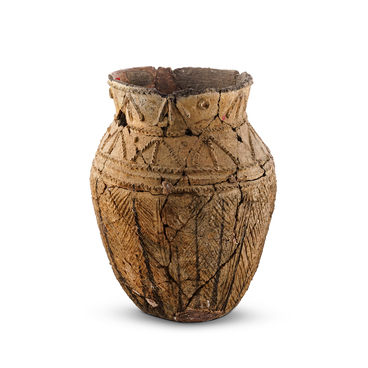Amber beads from the museum’s collection provide evidence of long-distance trade contacts during the Bronze Age. The Baltic–Dnieper amber region, which extends from the shores of the North Sea through Denmark, Germany, Russia, Poland, Belarus, and Ukraine to the Black Sea, is the most well-known and rich source of amber. The largest deposit of amber can be found in the Kaliningrad region near the village of Yantarny.
Since ancient times, people have collected amber and used it for jewelry. The “sunstone” from the Baltic coast has been highly valued and considered a desirable decorative item. Amber beads from the Bronze Age that were discovered in the Voronezh region serve as proof of these long trade routes. During the Bronze Age, extensive “metallurgical provinces” or centers formed, where different cultures interacted and exchanged metalworking techniques and mining methods across vast territories.
The Pavlovsk kurgan burial site is located on the left bank of the Gavrila River, approximately six kilometers southeast from the town of Pavlovsk in the Voronezh region. The site spans almost three kilometers in a north-west to south-east direction. It consists of approximately 60 mounds. In the 1970s, a field survey conducted under the direction of Arsen Tigranovich Sinyuk led to the excavation of 56 of these mounds, which contained a total of 175 burials of the Bronze Age.
The mounds in this area were circular in shape and ranged in diameter from 12 to 32 meters. They were typically up to 2.5 meters high and were constructed primarily with chernozem soil. Most of the burials within these mounds belonged to the Pit Grave and Catacomb cultures from the Early and Middle Bronze Ages.
The grave goods consisted of 63 items, including 31 pieces of metal products made from copper and bronze (knives, beads, pendants, earrings) and stone products (arrow straighteners, maces, beads, knives, punchers). Additionally, there were objects made from bone, such as sets of beads, approximately 30 zoomorphic beads (pronizkas), a bracelet, and a handle.
The Pavlovsk Bronze Age burial site demonstrates the significance of handicraft production in ancient societies and the prominent position of artisans within the social hierarchy of that time period.

